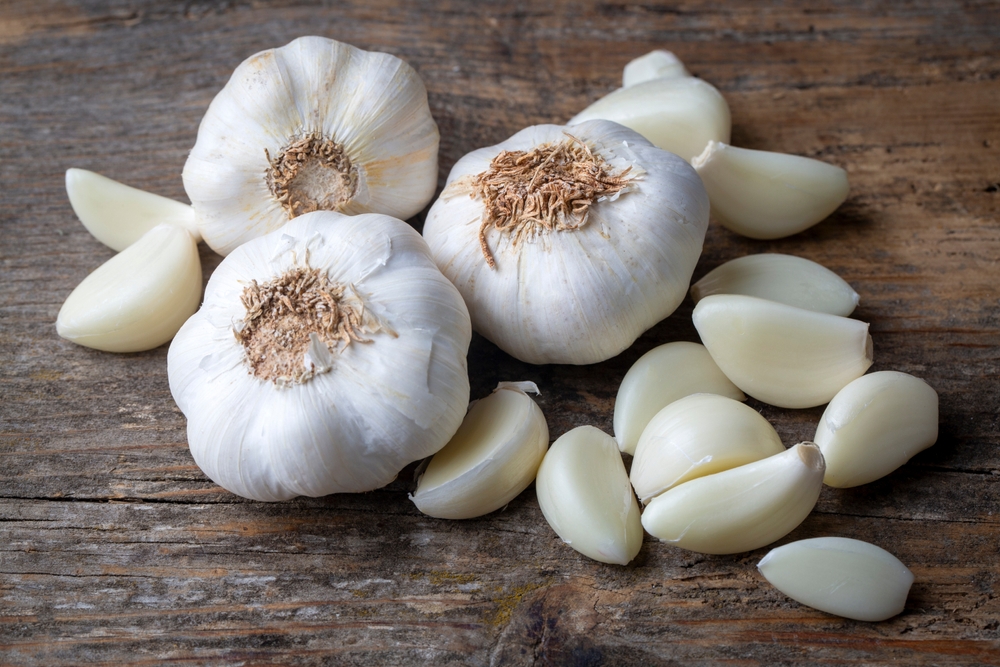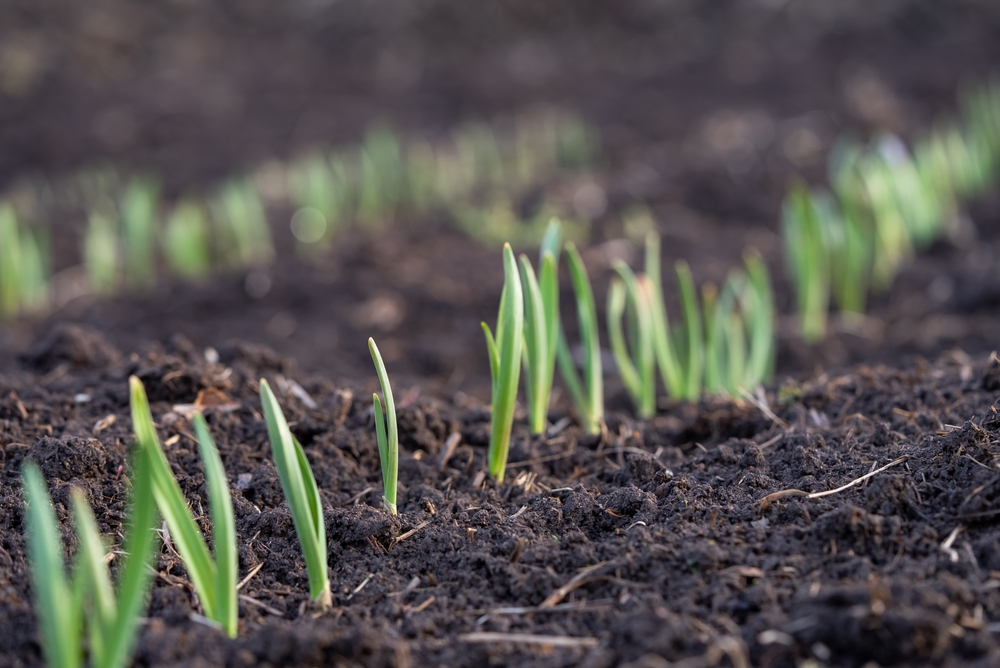
Image Source: Shutterstock.com
There’s something almost magical about planting garlic and shallots in the crisp air of autumn. While most of your garden is winding down, these flavorful underground powerhouses are just getting started. They don’t mind the chill — in fact, they love it. Planting them now sets the stage for bold, aromatic harvests that will make your kitchen (and your taste buds) sing come summer.
So grab your trowel, slip on your gloves, and let’s dig into why right now is the perfect time to plant garlic and shallots.
Cooler Soil, Stronger Roots
When temperatures drop, most plants hit the brakes — but not garlic and shallots. Cooler soil encourages them to put their energy into root development instead of leafy growth. This slow, steady start helps them establish a strong underground foundation before winter hits. By the time spring rolls around, they’re locked in and ready to explode with growth. It’s nature’s way of saying, “Good things come to those who plant before it freezes.”
They Love a Little Winter Chill
Here’s a gardening secret: garlic and shallots actually need a period of cold to perform their best. The winter chill triggers a process called vernalization, which helps divide the cloves and bulbs properly. Without that cold exposure, you’ll end up with undersized bulbs — and nobody wants that. By planting in the fall, you’re giving them the exact conditions they crave to bulk up beautifully later. They spend the cold months quietly prepping, so when warmth returns, they’re unstoppable.
The Soil Is Perfect Right Now
In early to mid-fall, the soil is still warm enough to encourage root growth, yet cool enough to prevent the bulbs from sprouting prematurely. That balance is gold for garlic and shallots. You don’t want them growing tall before winter because frost will damage those tender green shoots. By planting now, you let the soil do the work — firming up the bulbs while keeping their growth in check. It’s like sending them to a cozy spa before their big growing season.

Image Source: Shutterstock.com
Less Competition, More Growth
Most garden pests are packing it up for the season, which gives your fall-planted garlic and shallots a clear advantage. The cooler weather naturally keeps diseases and insects at bay. Plus, with most plants out of the ground, your bulbs get all the sunlight, space, and nutrients to themselves. No competition means no excuses for slow growth. It’s the perfect off-season strategy: plant when everyone else is quitting.
Nature’s Timing Is on Your Side
If you’ve ever wondered why experienced gardeners always plant garlic and shallots in the fall, it’s because they’re syncing with nature’s rhythm. These crops naturally evolved to overwinter in the ground, just like wild alliums. When you plant them now, you’re aligning with their biological clock — not fighting against it. Spring-planted garlic often struggles because it skips that essential cold dormancy period. By following nature’s lead, you set yourself up for bigger bulbs, stronger stalks, and better flavor.
Garlic and Shallots Hate Heat During Germination
Warm soil might sound good, but for garlic and shallots, it’s the enemy during early stages. High temperatures can trigger premature sprouting or rot before roots even get established. Planting now avoids that risk completely, as the cooler ground keeps things stable. The bulbs settle in gently, developing roots instead of wasting energy on foliage. When spring warmth finally returns, they’ll be perfectly timed to take off without setbacks.
The Payoff: Flavor and Storage That Lasts
Garlic and shallots planted now aren’t just healthier—they’re tastier. The long, slow growth from fall through summer concentrates their natural sugars and oils, producing complex, bold flavors that store incredibly well. When harvested at the right time, fall-planted bulbs can last for months in storage without losing punch. You’ll notice it the moment you slice into a clove—the aroma is richer, sharper, more alive. It’s the reward for patience and perfect timing.
It’s Practically Foolproof Gardening
Few crops are as forgiving as fall garlic and shallots. You plant them, tuck them in under a layer of mulch, and let nature take the wheel. They don’t need constant watering, fertilizing, or fussing. Even if winter brings snow or freezing temperatures, these hardy bulbs handle it like pros. Come spring, you’ll be greeted by sturdy green shoots, proof that your lazy-season gardening paid off big time.
A Little Effort Now, Big Harvest Later
Fall planting is all about delayed gratification, and garlic and shallots deliver that satisfaction tenfold. You put in minimal effort now—just loosen soil, separate cloves or sets, and cover them up—and months later, you’re pulling up fat, aromatic bulbs worthy of a chef’s kitchen. It’s one of those rare gardening wins where less really is more. Think of it as an investment: the few minutes you spend planting today will yield months of flavor next year.
Let the Fall Planting Begin
There’s no better time to plant garlic and shallots than right now. The cool soil, reduced pests, and built-in chill of winter combine to create the perfect growing conditions. These crops thrive on the rhythm of the seasons, quietly working beneath the surface while the rest of the garden sleeps. So if you’ve been waiting for a reason to dig in this fall, this is it.
Have you tried planting garlic or shallots in autumn before? Share your tips, stories, or favorite growing secrets in the comments below—we’d love to hear how your bulbs fared!
You May Also Like…
Why Garlic Loves Being Planted Before Winter
9 Edible Weeds That Pop Up in September
Why Some Seeds Germinate Better in Cold Soil
How Earthworms Work Harder in Fall Soils
5 Natural Mulches That Protect Roots From Frost
Leave a Reply